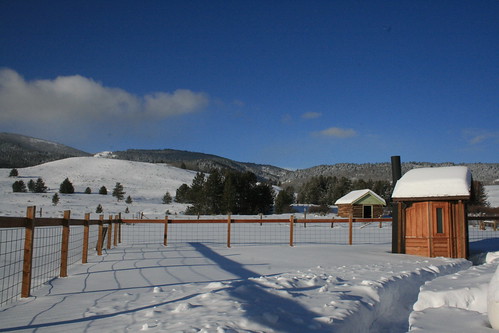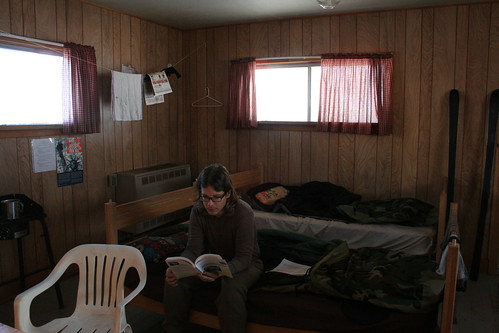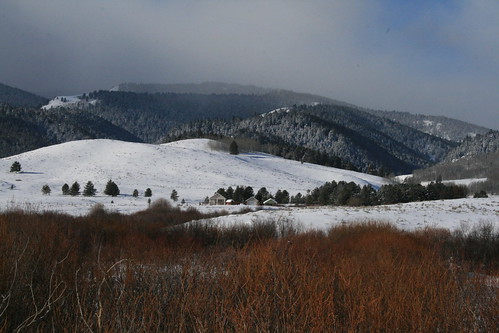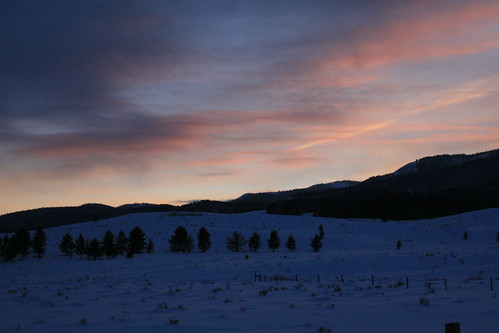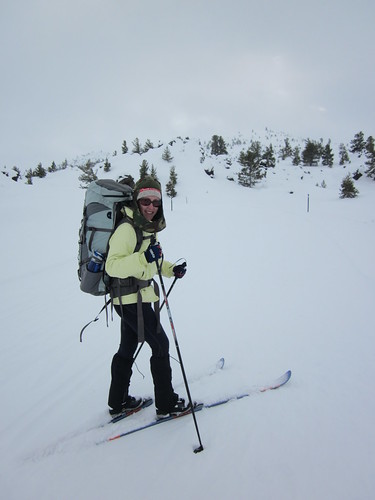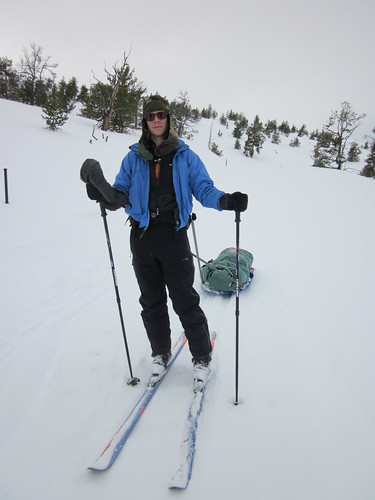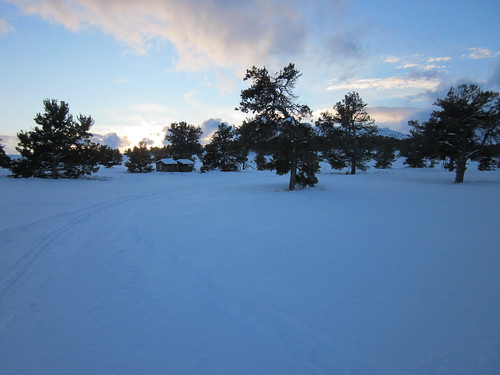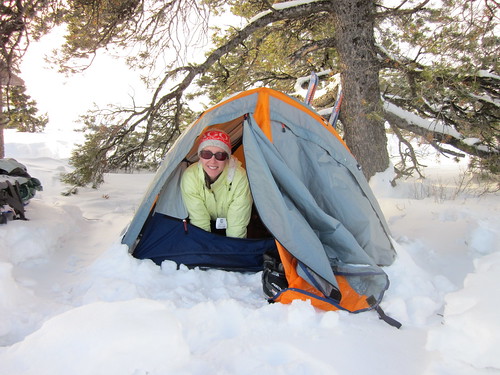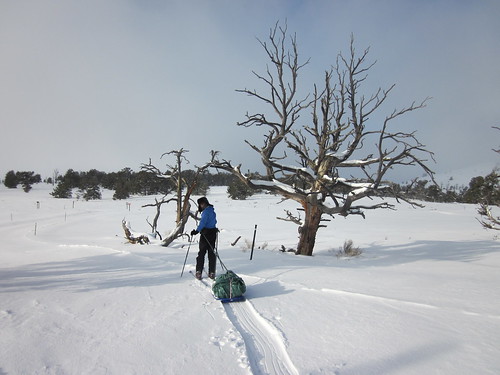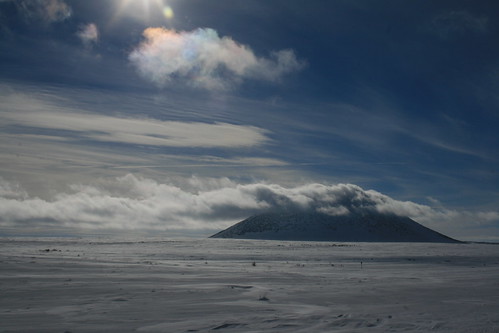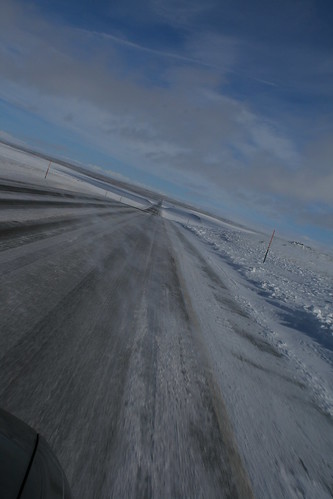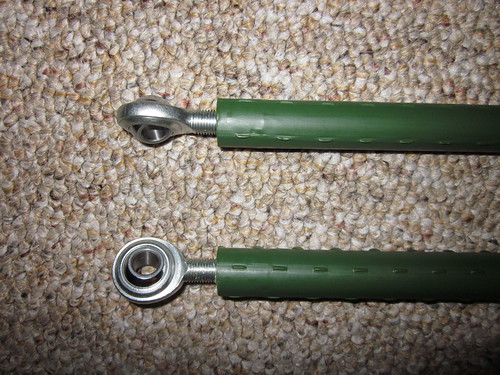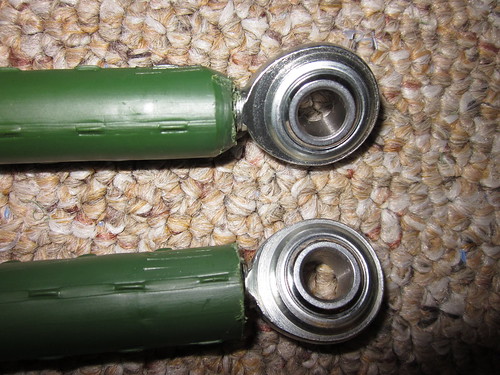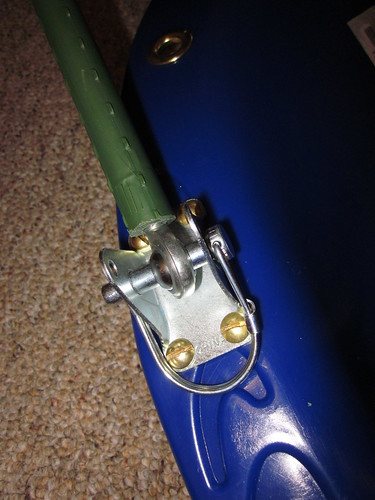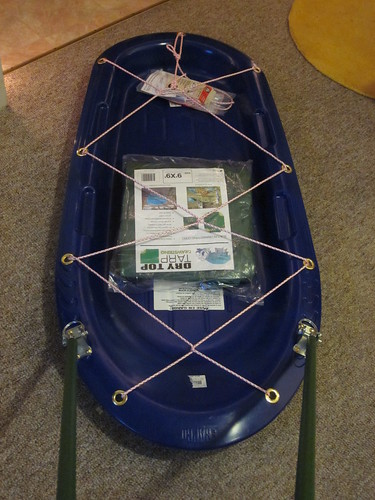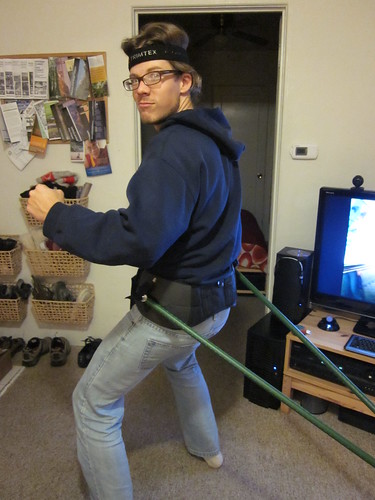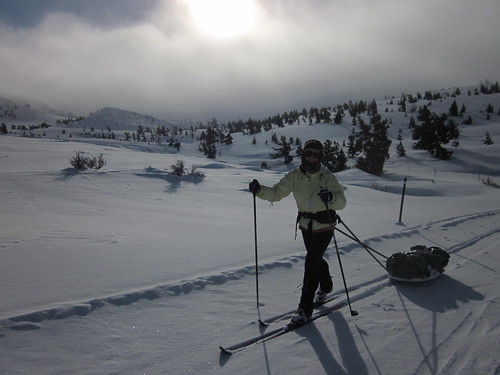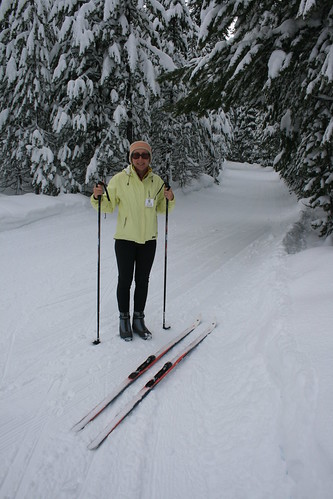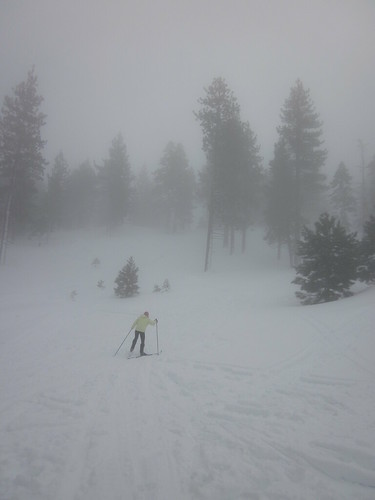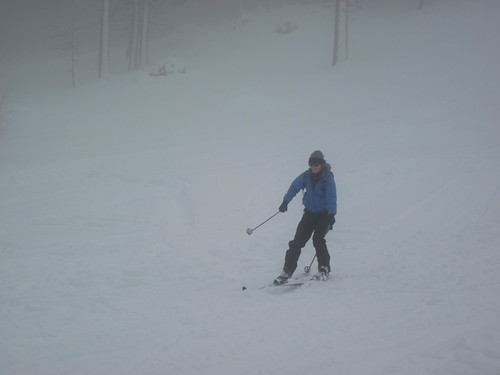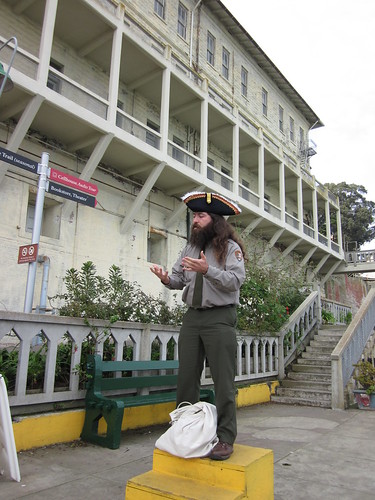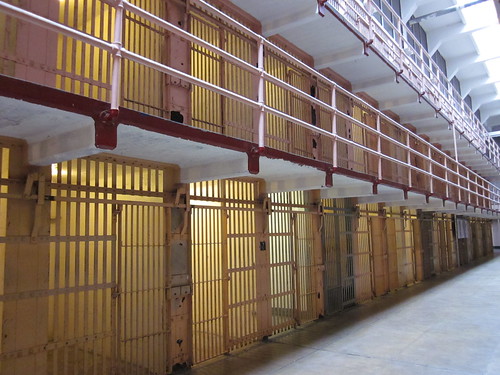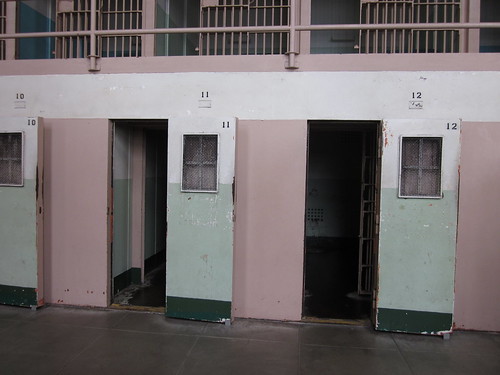
Entering Saline Valley Rd with the baja. Notice the Road Closed sign.
The third time is the charm, as they say. And it definitely was the charm for us, as we can finally say that we've made it into Saline Valley after three attempts! We must have had an unknown good luck charm riding with us that day, because we actually almost didn't make it. But I'm getting ahead of myself telling the story here, so let me back up.
Saline Valley is now a part of Death Valley National Park and is known for being one of the last unspoiled large Death Valley-like valleys left. Its also known for its natural hot springs, which have been taken care of by volunteers and squatters for many many years. Somebody planted huge palm trees at the springs, so they resemble the classic picture of an oasis in the middle of a dry and parched desert. Birds sing, wild burros roam, and a lush grassy lawn under the shade of tall and full palms invite the curious soakers who make it there. Stories of beautiful tiled hot tubs (complete with a hot shower in one area) in the middle of a rarely visited and hard-to-get-to pristine desert valley drew us in. Since I heard of this fabled place over one year ago, we had to go. I mean, WE HAD TO GO. There was no if, there was only when. Only determined souls go there, we heard, and we had plenty of will, so we knew there would be a way.
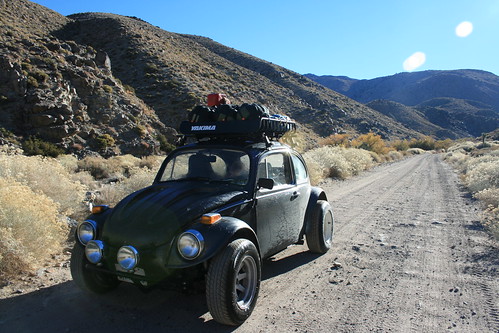
Saline valley Rd as it descends into Saline Valley once over Hunter Mt area.
But what you equally hear about, in addition to the hot springs, are the roads which go into the valley. There are four roads, actually, and you can take your pick. First, the most popular is the south pass of Saline Valley Rd, and then there is also the north pass. Finally there is Steel Pass, and Lippencott Rd. (both of which are worse than the first two). We heard that all were extremely bad and in horrible condition. The park service keeps a 'Road Closed' sign at the intersections of Saline Valley Rd with the paved major highway to keep people out. It is not actually closed for most of the year, but the sign is meant to scare people, or at least make then think twice before continuing. The only time the roads actually close is when they are impassible by snow or if a section gets washed out. Even then, you can still attempt to drive on through. Well anyways, we took all of the rumors seriously, so we decided to take the baja because it had a lot of clearance and take some extra gas too.
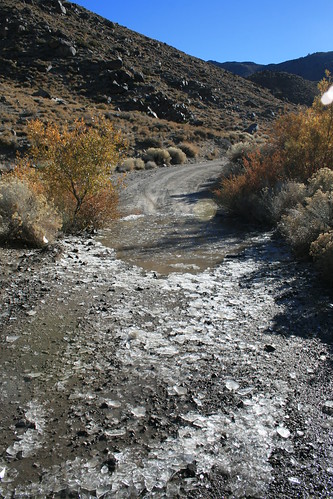
Ice breaks up into tiny chards as we drove through one of a few cold springs which pooled in the road (yes its that cold).
It took us all day driving just to get to Panamint Springs, the closest place that has gas to the intersection where Saline Valley Rd and Hwy 190 (which goes through the national park) meet. Since it was dark when we got there, we decided to gas up, buy some post cards, and get a camping spot for the night. Could you believe that it only cost $7.50/night to camp!? That's so cheap! I guess it was the off-season price. We had no fire or anything to keep us warm, so after we set up our tent (and after our mom realized that scorpions and snakes weren't going to eat her alive) we sat inside the baja to keep warm while we had dinner and drinks. Then we went to sleep.
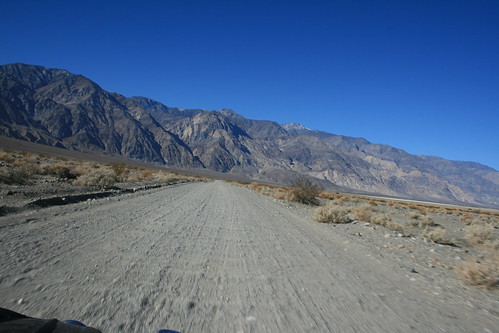
Finally in Saline Valley.
I was woken up by the sun the next morning. But it was still very early because it was really cold outside! That didn't matter though because we were really excited to get going on our way down to Saline Valley. We quickly packed up the tents and stuff, and started driving back to the intersection a few miles away. When we got there, we saw the traditional Road Closed sign along with a sign that read 'High Clearance Vehicles Recommended.' Okay, we were prepared for that. What we weren't prepared for was the great condition of the road, exactly opposite of what we thought. We were expecting crazy ruts and large boulders in the road, or washed out sections. We got none of that. It was flat and wide for most of it, except when it dipped into a dry wash near Hunter Mountain. That part was slightly rutted up and rocky, but not bad. We kept commenting how we've been on worse roads in the national park, and they don't have any Road Closed signs. We started to think they must be putting the signs up to keep people at the springs to a minimum.
Well, it took us a bit over an hour of driving until we were deep in the middle of the valley, approaching the salt lake playa and dunes area. Romy had to go pee after all the washboards, so we pulled over. It would have been a routine potty break except that when Romy walked around the back to check the oil and if random parts didn't fall off, we got the shock of our life! A HUGE puddle of oil was under the baja, with a steady trail that lead about 30 ft back on the road and then stopped. The engine was still dripping steadily. Actually, it wasn't dripping, it was pouring! I would estimate we lost almost one quart right there. I feel bad about the spill.
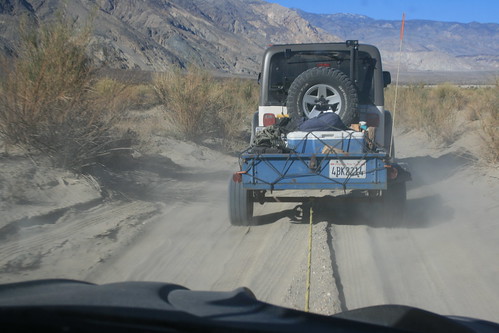
Getting towed in by a Jeep!
Romy decided, after peeking around under the engine, that the rear main seal must have went bad, and that was the source of the oil leak. The good news was that we had two quarts of oil with us, but the bad news was that we didn't have any way to fix the seal, because we didn't have one to replace it. And we were over 50 miles from the nearest paved road, which was still at least 10 or so miles from the nearest town. We weren't sure if we could drive the baja that far without loosing all of the oil in the engine, drip by drip! We only saw one other car since we got into Saline Valley, so we figured our chances of being towed were slim. We started flagging down every car that passed by at that point. About 10 minutes into our wait, the first car came by. We asked them if they had any oil to spare. They didn't. And they said they couldn't tow us. But they gave us some good news. They said that there were hundreds of people (!) at the hot springs and that we were very close to the turn off that went to the springs. If we could get to the turn off, then there would be tons of people driving in or out. So we decided to try and push the baja to the turn off.
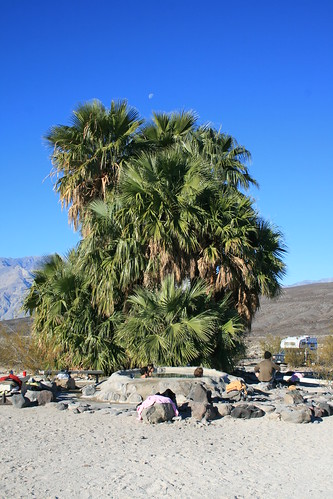
Palm Hot Spring (the slightly cooler pool).
We got some good momentum going, but then the road started going uphill. We couldn't keep pushing it, so we decided to get it far off to the side of the road and keep waiting for more people to pass by. As if on cue, we hear the roar of another car coming down the road. This time it was a Jeep, and it was flying down the road so fast, we didn't think it would stop in time! But the Jeep stopped, and we explained our situation. It was a nice couple and they were headed for the springs. They said that they could tow us into the springs where there was a satellite phone for emergencies, and lots of people who might or might not have spare parts and extra oil. Then the couple offered to tow us back out of Saline Valley on Sunday if we couldn't get it going again before that (it was Thursday, Thanksgiving day). We had nothing to lose at that point. We wanted to go to the springs, we were offered a tow in
and out, we had enough food and water for ourselves for the next 4 days - what more could we ask for?! So there we were, hooking up our tow strap to the back of the small trailer that they were pulling behind their Jeep.
We got pulled the last five or so miles from Saline Valley Rd, to the turn off, and then down the sandy and bumpy road to the springs. The whole time, I was kind of thinking if what we were doing was really very sensible. The most reasonable thing to have done, probably, was wait for somebody who was willing to tow us out of there so we could fix the baja. It would of been a bummer. But instead we were getting towed deeper into the middle of nowhere, Saline Valley. But what the heck!? We were thwarted by these springs twice before, and the third time's the charm, damn it! We were going to have our charm even if we had to limp our way in (with the help of a Jeeper of all things)! Soon we could see the silhouette of large palm trees in the distance, and all of the worries were pushed aside with excitement of finally getting to the fabled hot springs of Saline Valley!
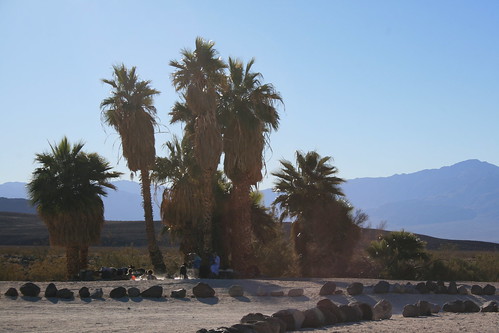
The hot pool at Palm Hot Spring.
What came next was a bit of a shock (this trip was turning out to have a lot of shocks sprinkled here and there). Now, we knew it was Thanksgiving and all, and we also knew that a lot of people go to Saline Valley to have a communal dinner, but the sheer number of people that started coming into view as we got closer, we were not prepared for! Car after car, trucks, tents, and even a yurt! Vans with solar panels, and crazy hippies and naked people abound! I swear it was straight out of Easy Rider, a hippie commune in the desert. When I thought of a large gathering here for Thanksgiving, I was thinking 50 people max. We saw hundreds! Later that weekend, we heard the headcount for dinner was over 200, which meant that there was at least twice as many people camping because not all went to the communal dinner that night.

Upper Warm Spring, which is fenced to keep the wild burros out.
So here we were for at least the next four days, and I was starting to laugh about what my mom thought of all this. She was shocked too, because she kept making comments about the weirdos and all the naked people. We got out of the baja and thanked the Jeepers for pulling us in. Now we had to find a camp spot. They towed us into one of the last open areas, on top of an old travertine expanse. At that point we unhooked from each other, and started setting up camp. The guy (named Rick) who pulled us in left us with a final comment. He said, "You do know this place is clothing optional, right?" And we said, "Of course." Thats how hot springs usually are. We thought he was referring to the springs, so gave no other thought to the odd, seemingly random comment. And then we looked around. Our nearest camping neighbors were both buck naked, apparently cooking dinner for the communal dinner which they were planning on going naked to. It was almost comedic, because it was only about 60 degrees out. And then my my mom pointed in the direction of the Jeepers who towed us in. "Honey, he's naked!" She laughed. OMG the Jeeper was getting naked too!

Saline Valley dunes stretch for a couple miles on the west side of the valley.
Apparently, we had not heard of the nudists at Saline Valley. After a few minutes, we all got over the novelty, and accepted that some people just like to be naked, even if its only 60 degrees outside. We just tried not to stare. Besides, there were a lot of other weirdos walking around to pay attention to. Like the guy in the Barney costume with duck feet. Or the pirate man, or the guy in the skirt made out of old ties. . . lets just say that if you looked 'normal', you were actually the weird one. We were surrounded by a lot of 'artist' types - people who use their creativity in unusual ways. It was actually kind of refreshing. We hang out with nerds everyday at school. We are nerds.
While I set up the tents with my mom, Romy immediately started working on the baja, trying to take a closer look to see what exactly was wrong. After an hour or so, he discovered that the oil cooler was extremely loose. And that the rear main seal was intact and that the oil was most likely leaking from the large gap that opened up when the oil cooler wiggled its way loose from all of the bumps in the road for the past 60 miles or so. That was such good news to hear! After all, we would be able to fix it by just tightening the oil cooler back up, and refilling the oil. And with that news, we were pretty happy to head to the hot springs to check them out.
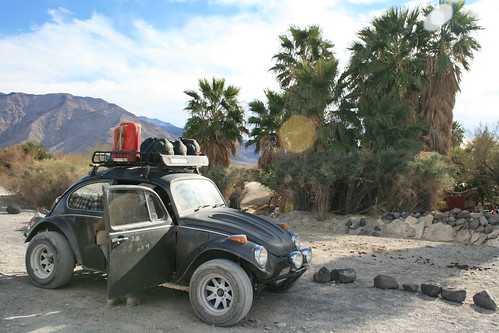
The baja parked outside of the Lower Warm Springs area.
There were actually three sets of springs. The main area, where the communal dinner was being served, and where there are many small hot tubs complete with a shower, is called Lower Warm Springs. There is even a lawn that is continuously being replanted and watered by the 'campground host.' I have the feeling he's been a squatter there for a long time, and became the host when the national park took the place over. He lives there year round and takes care of all the tubs and springs. It is completely voluntary and he gets no money (or so we heard and read). About 3/4 mile further to the east is another hot spring called Palm Hot Spring. There are two large jacuzzi style tubs build there, both fed by the same source. One is kept around body temperature while the other is about 105 degrees. Thats where we went our first night at the springs. It was packed with people, but not so bad. Everyone was pretty friendly.
Further up the road, heading toward Steel Pass, there is a third and final set of springs called Upper Warm Spring. It is left in its natural state (meaning no tub or anything), although people dug out two muddy bottom pools to soak in. The springs are surrounding by green bushes, and fenced in completely to keep the wild burros out. The wild burros were once tame and owned by the many miners in the valley until they went bust. The miners released their burros and now they are wild, roaming freely in the valley and occasionally invading the campground looking for food that drunk people or stoned people leave out overnight. We went to check it out the next morning after we arrived (the day after Thanksgiving), but already found a bunch of people in there. In fact, it was hard to
not find people everywhere. So we decided to wait a little bit and eat our lunch while the people who were already there were in the pool. We had salami and cheese sandwiches with some dried figs and dates. When we finished lunch, we waited some more. And kept waiting and waiting, but apparently these people were just going to keep sitting in the pool until they turned into prunes. Then, another car rolled in, and we saw people converging on the spring by foot. I was kind of getting pissed off at the people who were hogging the springs, so we decided to just leave and go visit the Saline Dunes instead. On our drive out, we passed about 8 more people, all headed to the spring either by foot or by Jeep. How crazy!
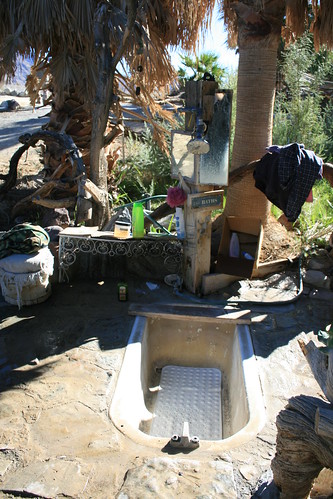
The bath at Lower Warm Springs where you can take a hot or cold shower.
After that point, I was starting to find the whole situation of feeling extremely crowed in the middle of such a huge deserted place a little bit ironic, in a bad way. Of course, we picked one of the most busiest times to come and visit, but its also one of the only times that we have enough time off to make the trip out there worth it. I just did not expect so many people there. Most of the people were very nice and kept to themselves, but others were very annoying. There was definitely a click of people (they called themselves 'camps') that had been coming to the valley every year for many years. I also got the impression that some of them had lived out their better years in the 70s and 80s at the springs, and have regular reunions. These were the people who I didn't like the most, because they had a very strange attitude. They openly commented about themselves and how long they had been coming to the springs, almost with this air about them, like they owned the place or something! One of the alpha females of the group came to the crowded hotter pool at the Palm Hot Spring one night (along with her posse), and saw that it was full. She rudely (but nicely) kicked people out by making all kinds of annoying comments, like, "Isn't it dinner time, guys?", etc, etc, blah blah blah. We had just got there, so there was no way in hell we were moving, but it worked on about 1/3 of the people (maybe because they had experienced her in the past). In some ways I wish we had decided to go to another pool, because being in the pool with those people was weird. They would talk and sing out loud (encouraging others to sing with them), and do a ooohhhmmmmmmm thing. They talked about their weird religion, and how they had to bless things and other strange stuff. Other people at the large pool were talking too (not part of their posse), but as soon as the conversation moved away from the posse, the alpha female said she wanted a moment of silence. WTF? Apparently, it was ok when they talked, but it was too noisy when others not part of their group talked. Somebody shoot me if I ever get that way!

A bay window bus made it all the way from Utah!
Okay, so I am going to complain some more. What gets me pissed off is that you can tell that these people were once young and hippie types. Except now, after hearing the way that they talked about themselves, they all grew up, made money, and lived in large expensive houses, like the alpha female who kept talking about her home on the top of the Santa Cruz mountains with a pool. It seems like the hippies turned into everything they once hated. Now they are just yuppies. Yuppies who come to Saline Valley once a year to reminisce about the old times, and make themselves feel good about themselves. Whatever.
And now that I got all the bad out, I do have one good thing to say. Even though they were all kind of old (in their 50s, 60s, and even one woman in her 70s), they all looked very young! There must be something they were doing that kept them looking so good. Maybe its their way of thinking and their religion (or stress-free life style?). I don't know. Maybe it was because the sun was going down and I didn't get a real good look at them up close. Maybe they were really all wrinkled, but I just couldn't tell. Maybe it was because they were all skinny?
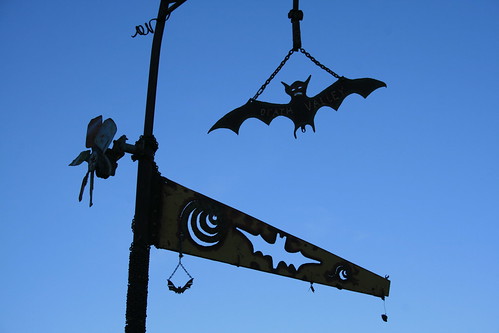
Art display in the middle of the desert.
Anyways, there were also plenty of other types of people there too, like the off-roaders kind. I tend to like those people more. They seemed to be there because of the challenge of getting there, and the springs we like a bonus at the end of the tunnel. The second night we camped, we went for an hour dip into one of the larger pools at the Lower Warm Spring. The crowd there seemed more normal. But we did meet one younger person (younger than us) that apparently grew up at the springs. Then we started hearing a lot of comments about children literally being born at the springs. So that's why I have the feeling that there must have been people squatting at the springs before the park took it over. They must have raised kids there and everything. I guess as long as you have shelter and food, you're all set to go, because there is plenty of water (hot and cold)!
One interesting story we heard while we were in the tub, sharing company with more normal people, was one about a bee farmer. This was apparently a pretty recent story because the man is still alive (or maybe just recently passed away). Well, this bee farmer, decided to he wanted to keep his bees in Saline Valley because there is a salt lake with marshy type plants and other vegetation which the bees can make honey from. However, he didn't know that there were already roads that went into the valley made by miners. So instead, he went over the high mountain pass! I think he literally climbed from Big Pine up and over the 11 or 12,000ft mountain range on the west side of Saline Valley. We heard that he built two cabins along the path that he took over the mountains, and that they were along a canyon that has a spring tucked inside that cascades into a waterfall. One person said they hiked to the second cabin, which is still in good shape and can be used as a overnight thing while hiking on the trail. But you need ropes because some of the trail is steep and dangerous, I guess. The other cabin is rotted away, maybe. Well, given all the hints and details from the people we talked to, I think we know which canyon the trail is at. I want to go hiking up it in the spring, hopefully, and try to find the waterfall and old cabin! So the bee farmer kept his bees in the valley for a while, and once he got old and tired, (and figured out about the roads, I presume) he decided to retire on the west side of the valley in Big Pine. He might still be alive. What a crazy story!
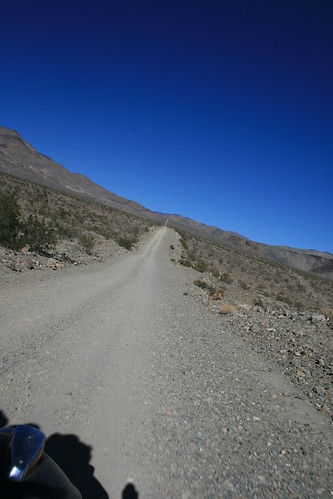
The road we took out of Saline Valley, the north pass.
The last thing I want to write about are the military jets that fly over the valley. The air space over Saline Valley is designated as a low fly zone. So about once a day, the pilots do their low fly by's for training. We heard from other campers that the jets literally fly so low, that you can see the pilot's face from where you are standing. We saw two jets fly by really low our second day and it was actually true! We were able to see their helmets! And they were really loud! It was soooo cool! Better than any air show!
So that's it about Saline Valley. We had a good time and hope to return again, but when there are less people, of course.


